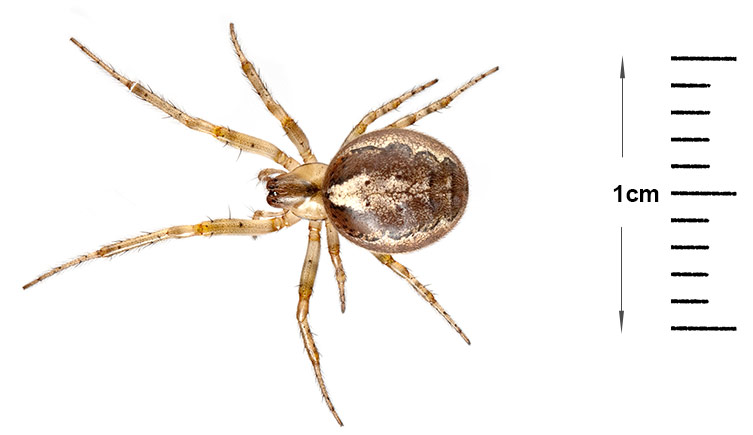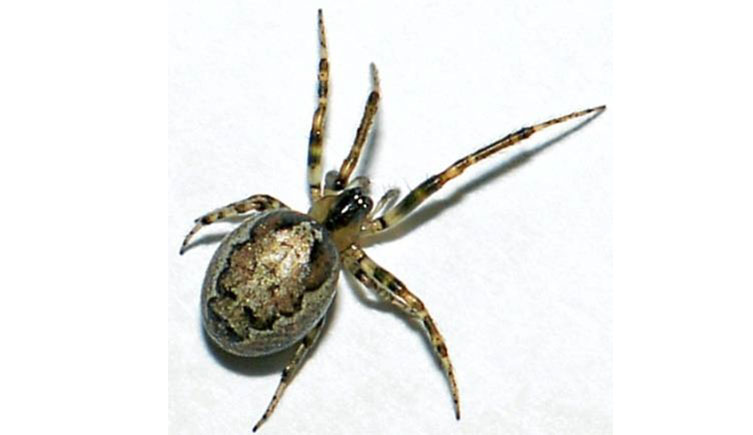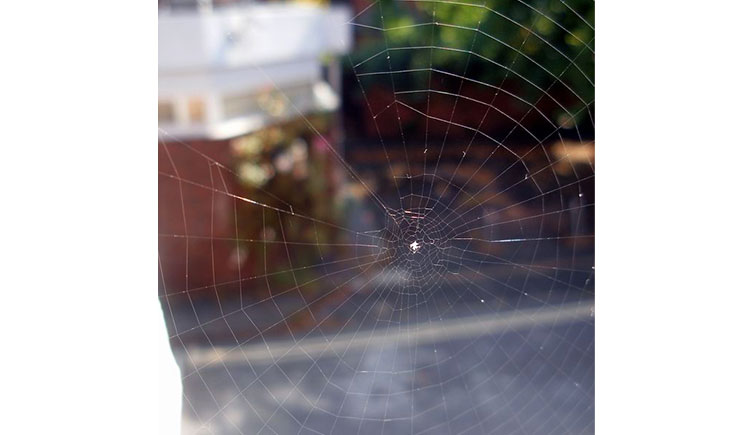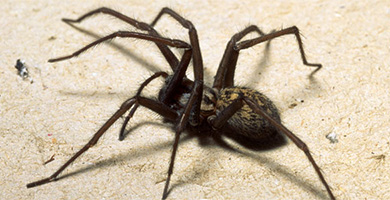Missing sector orb web spider - Zygiella x-notata
Other names: Silver-sided sector spider, winter spider
Overall size: up to 15mm
Season: all year round (often conspicuous even in winter)
A small spider with pale body and legs and silver-grey markings on the abdomen. It is usually found around the outside of houses and gardens, and is particularly common around windows.
Because of their superficial resemblance to false widow spiders (Steatoda sp.) people often worry about them, but they are totally harmless to humans.
Adult females are 6-7 mm long (ignoring legs), and males are 3.5-5 mm long. The spiders have a silver-grey coloured abdomen with a brown oak leaf pattern on the back. The legs are dark brown with light brown bands. The markings are somewhat variable.
Its webs seem at first classic orb webs - radiating spokes from a central point with concentric circles of web. On closer inspection a quadrant is always missing, which gives rise to its common name of the missing sector orb web spider.
This spider feeds on almost any flying insect captured within its web. As the outside temperature becomes colder in late autumn, they frequently come indoors through open windows, and build their webs on the insides of windows instead.
Habitat
Almost always close to human habitations: on window-frames, under guttering, on fences, etc. If the web is disturbed, the spider remains in its retreat. The species is widespread and abundant throughout Britain.
Life cycle
Missing sector spiders usually become adult in mid-summer to autumn. The males then appear in or near the female's web. Adult females can be found all year round.
Females lay eggs in autumn or winter and protect them in one or two egg sacs. They remain with the eggs until they die. The spiderlings hatch from the eggs but remain in the egg sac throughout winter and emerge during warm spring weather, then leave the egg sac and disperse.
The web
The orb webs of these spiders are recognisable because a small sector in the upper part of the web is left open and free of spirals. When making the web, the spider changes direction each time it reaches this point.
Within and just behind this vacant sector is a single strong strand of silk, the signal line, which leads up to the retreat. The spider waits for prey in a silk-tube retreat situated above the orb web, with the tip of the first legs on the signal line.



